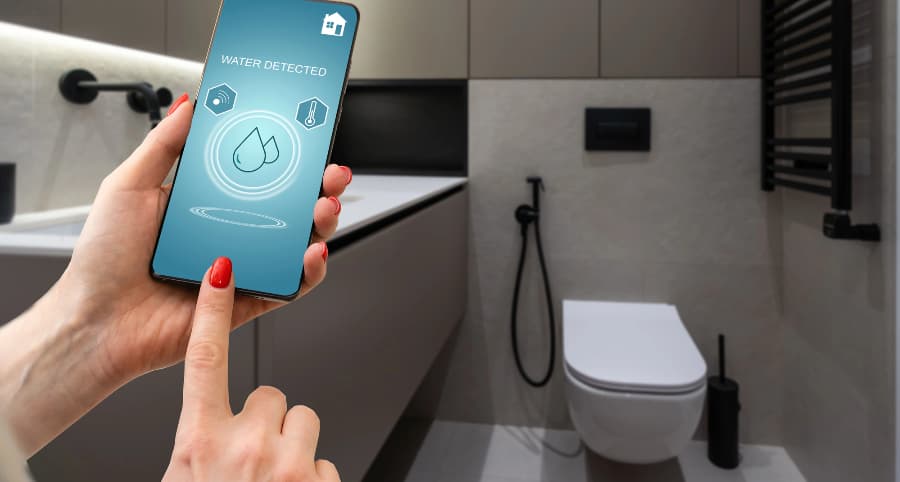How does a water sensor work and why use one with your Jamestown smart home?

One tiny leak in your home can result in big problems and thousands in damage. You need to safeguard against this threat; luckily, there’s a straightforward way to do so. A water sensor is an affordable, simple, and effective solution. See how they work and why you ought to incorporate water sensors into your Jamestown smart home.
How water sensors safeguard Jamestown properties
Water enters homes in various ways, whether from a broken appliance, plumbing problem, storm-related incident, or human error. However it occurs, you have to know right away, and this is why water sensors are important. But how do they really work?
Many water sensors are conductive and function with corresponding electrodes. When water enters the space between the electrodes, an electrical circuit is established, activating your alarm. You’ll also discover capacitive sensors that release an electrical field. When water contacts the conductive surfaces of these sensors, the field is broken, and your alarm sounds. Optical sensors employing infrared LED light are another option.
Some water sensors give you more
Some innovative water sensors provide even more defense as they use incorporated temperature sensors. This is a smart way to prevent pipe freezing. If there’s a severe drop in temperature, you’ll find out at once. Taking measures before pipes burst will protect you from water infiltration and costly repairs.
Why incorporate water sensors into your Jamestown smart home?
When water emergencies arise, you need to be warned immediately. You can reach this objective by incorporating water sensors into your smart home. Whether you’re on site to hear the alarm or away, you’ll be sent an immediate alert on your smartphone. In addition, your round-the-clock monitoring team will be notified. Every moment is critical in a water emergency to limit the destruction and disturbance to your family.
Where should you install water sensors?
Any spot susceptible to flooding is an appropriate position for water sensors. Put them in these spots:
- Bathrooms: Place close to tubs or at the back of toilets.
- Basements: Water often infiltrates lower levels via cracked walls or due to excess rain or faulty sump pumps.
- Near water heaters or appliances: Any water-connected appliance may eventually leak.
- Under sinks: Water sensors are ideal for identifying pipe leaks in place hidden from view.
- Attics: Detect roof leaks quickly and avoid costly damage.
Get water sensors with your Vivint smart home
Give your home the comprehensive protection it needs with Vivint’s advanced components. Our water sensors in Jamestown integrate with your Vivint smartphone app to send you automatic alerts when your alarm activates. You also get incorporated temperature sensors to prevent frozen pipes. Learn more about the smart home components available in Jamestown by reaching out to (601) 494-3394 today.
